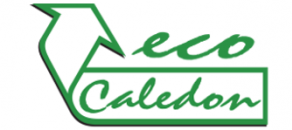Most of us know that generating electricity and burning fuel in cars produce gases that contribute to climate change and smog. Did you know that the garbage we carry out to the curb each week is also a culprit? In fact, the waste sector is responsible for 3.5% of the nation’s total greenhouse gas (GHG) emissions.
In Canada recycling and composting programs currently divert about 29% of solid waste from disposal. (In Caledon we do better, diverting 45%) The remaining waste is typically dumped at landfill sites or burned. Both of these options result in the release of GHGs such as methane and carbon dioxide (CO2) into the atmosphere.
Landfills are responsible for most of these emissions, including nearly one quarter of Canada’s total methane emissions. Organic material like paper, food or yard waste buried deep under layers of waste and earth does not sit there harmlessly, but decomposes without oxygen (anaerobically) and creates methane. Waste incineration (burning) pumps out nearly 1% of the nation’s total CO2 and nitrous oxide (smog) emissions.
Reusing and Reducing are the most effective ways to avoid emissions from garbage, as well as diverting waste from disposal, at least temporarily. Reuse is better than recycling. For example, glass containers are created in huge furnaces at very high temperatures, using considerable energy and generating GHG and smog emissions. When recycled in Caledon, coloured glass is broken up and used as clean fill instead of sand, which means that new coloured glass needs to be made, causing further GHG emissions. Our clear glass is recycled, reducing the amount of new glass that has to be made, but the recycling process still requires a lot of energy. Reusing glass containers is the best way to save GHG emissions, since the glass doesn’t have to be melted.
Recycling reduces the large amount of GHG and smog emissions produced by the extraction of raw materials and the manufacturing process. For materials like steel, plastic and aluminium, recycling can reduce GHG emissions by about two tonnes per tonne of product produced. Recycling paper has a double benefit, as it leaves the trees standing and absorbing more CO2, in addition to reducing the GHG emissions caused by making new paper.
Composting food scraps and yard waste does not generate any methane emissions and only releases a small amount of CO2. Since the material is plant derived, this is simply considered part of the natural carbon cycle. Backyard composting is best of all since there are no emissions from the Region collecting and processing the waste.
Incineration results in emissions of both CO2 and nitrous oxide (smog). In Caledon, half our non-recycled waste is burned. However, Peel Region uses the heat to generate electricity, which means that less electricity needs to be produced by coal-burning power plants.
Landfilling is the most common waste disposal method and, in many cases, the one that produces the most GHG emissions, primarily methane. Although 41 landfills in Canada recover the methane and burn it off, most methane is simply released into the atmosphere. Some landfills in Toronto and other cities use this methane as a great source of clean electricity. Unfortunately, when the Ontario government artificially capped the hydro rate at 4.3 cents per kilowatt-Hour, at least one planned waste methane power plant was cancelled in Toronto. Peel Region captures and burns off methane from some of our landfills, and there are plans to generate clean electricity from the methane at the Brittania landfill by 2004.
Reduction, reuse and recycling are the best ways to reduce greenhouse gas emissions. Diverting 75% of waste from landfills or incinerators would reduce Canada’s GHG emissions by 6.9 million tonnes per year. In Caledon this would prevent of 11,500 tonnes of GHG emissions annually, or ¼ tonne per person. Waste diversion also improves air quality and reduces water pollution, toxin leakage, garbage truck emissions, land use issues, and disposal costs.
What you can do to reduce air pollution from garbage:
1) Reduce – buy fewer things and choose products with less packaging.
2) Reuse – as much as you can. Reusing glass and paper makes the biggest difference.
3) Recycle – Peel Region has one of the best recycling programs around. In particular, paper should never be landfilled.
4) Compost or use curbside organics collection if available in your area – Kitchen and yard waste should never be landfilled.
—
Dr. Richard Ehrlich
